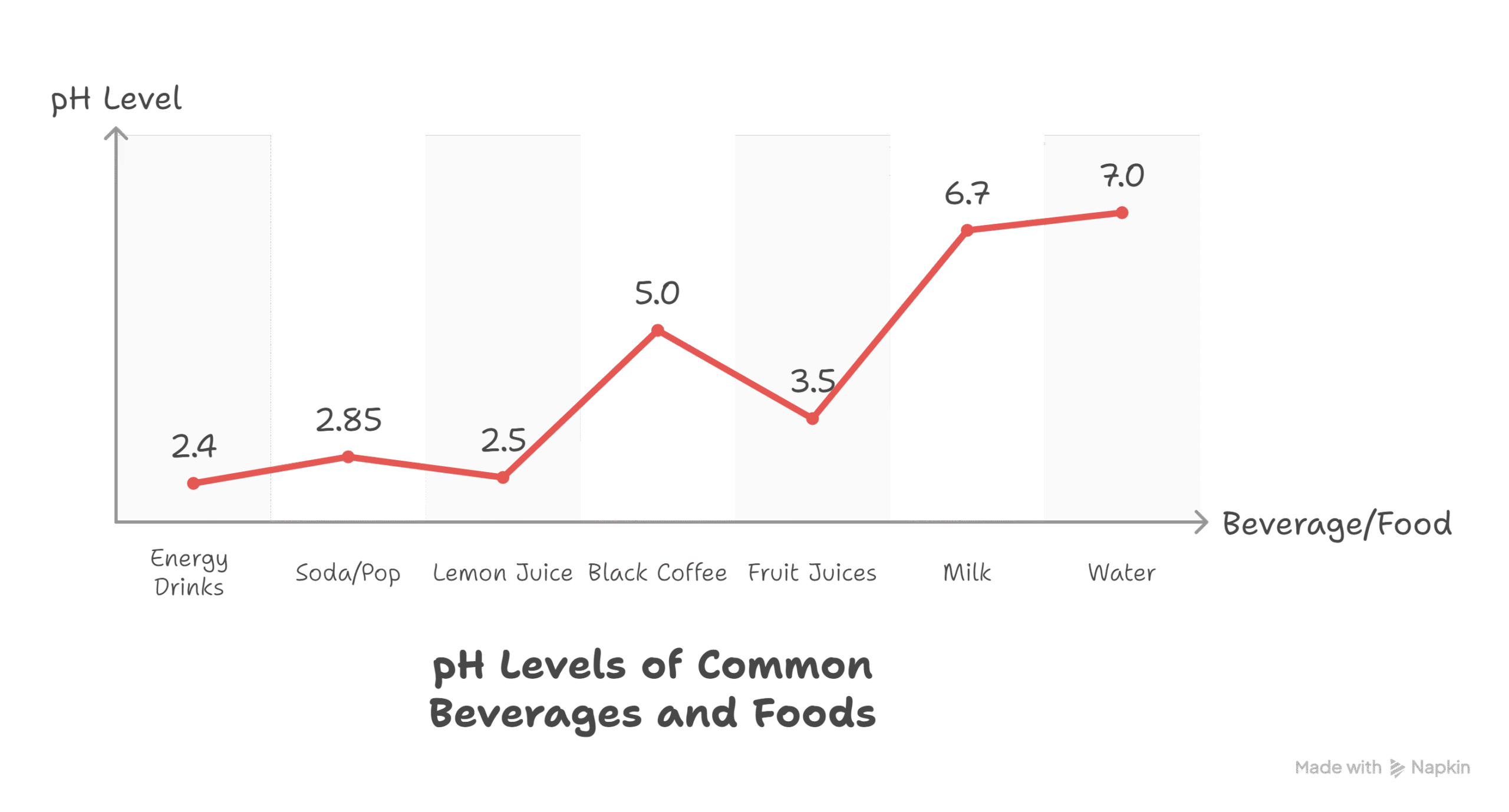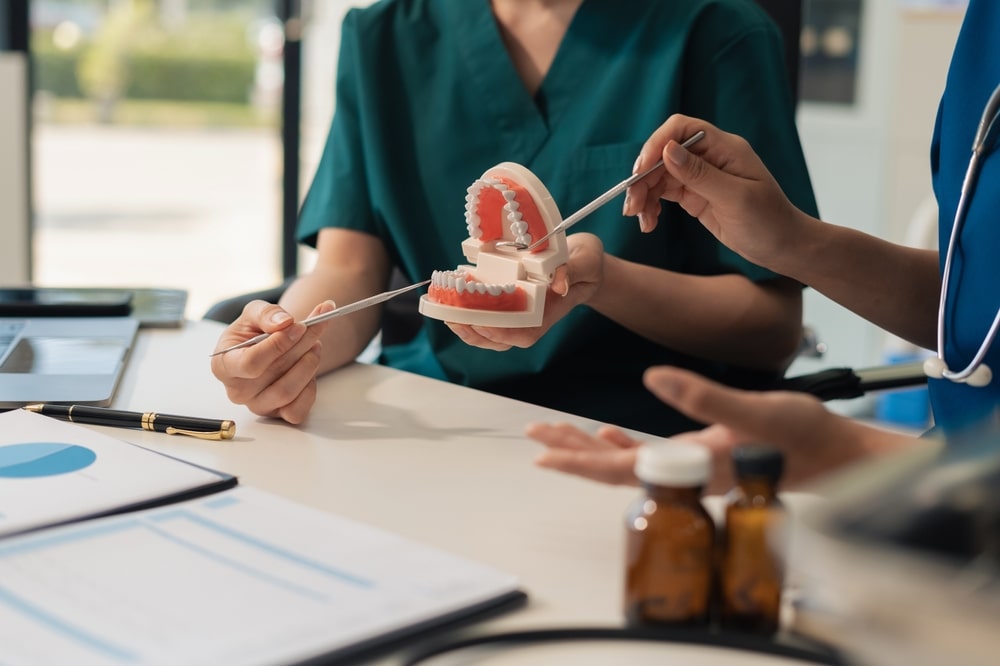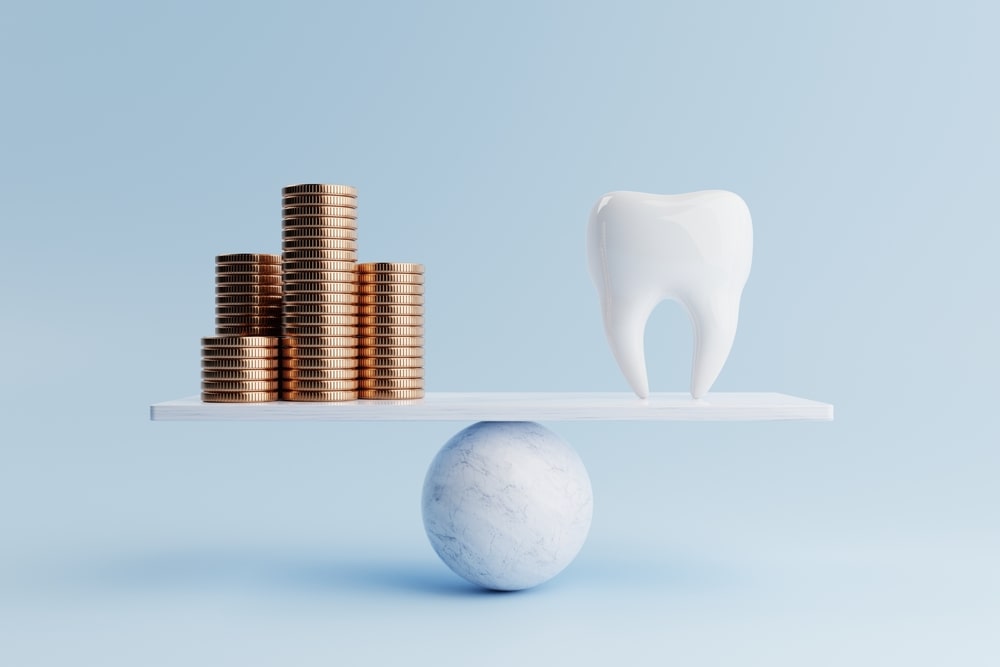That morning coffee that kickstarts your day, the energy drink that powers you through a late-night study session, or the sour candies you grab for a quick treat – they’re all part of the daily rhythm for many young adults. But have you ever paused to think about the invisible impact these beloved habits might be having on your smile? It’s easy to focus on the immediate boost or pleasure, yet beneath the surface, a silent battle could be brewing for the health of your teeth. From subtle stains that dull your pearly whites to the more serious threat of enamel erosion and decay, your diet plays a surprisingly significant role.
Let’s pull back the curtain and uncover what’s truly happening to your dental health with every sip and snack.
The Unseen Battle: Understanding Enamel Erosion & Its Enemies
Before we dive into specific culprits, let’s get acquainted with the star player in your mouth’s defense system: your tooth enamel.
What is Enamel? Your Tooth’s Irreplaceable Shield
Think of your tooth enamel as the hard, outermost layer of your teeth – the body’s toughest mineralized tissue.
It’s your primary shield against physical damage, temperature changes, and, most importantly, acid attacks.
Once enamel is gone, it’s gone for good; your body can’t regenerate it. This makes protecting it absolutely crucial.
Erosion vs. Cavities: Knowing the Difference
Many people use “erosion” and “cavity” interchangeably, but they’re distinct dental problems.
- Cavities (Tooth Decay): Primarily caused by bacteria that feed on sugars in your mouth, producing acids that slowly dissolve enamel. This typically forms specific holes or lesions.
- Tooth Erosion: A direct chemical attack on your enamel by acids from foods and drinks, leading to a gradual wearing away of the entire tooth surface, not just isolated spots. Bacteria aren’t the primary cause here.
While both can lead to sensitivity and tooth loss, erosion is a broader, more diffuse wearing down of your tooth structure.
The pH Power Play: Where Your Diet Turns the Tide
To understand tooth erosion, we need a quick lesson in pH. The pH scale measures how acidic or alkaline (basic) something is, ranging from 0 (very acidic) to 14 (very alkaline), with 7 being neutral.
Your tooth enamel starts to soften and demineralize when the pH in your mouth drops below 5.5.

This is the critical “danger zone.” Many common young adult drinks and foods fall well within this acidic range, setting the stage for erosion.
Let’s look at some examples:
- Energy Drinks: Often incredibly acidic, with pH levels ranging from 1.5 to 3.3 (Periodontalhealthcenter.com reports popular brands like Red Bull, Monster, and Celsius in this range).
- Soda/Pop: Typically pH 2.3 to 3.4.
- Lemon Juice: pH 2.0 to 3.0.
- Black Coffee: pH 4.5 to 5.5 (varies, but often sits at the edge of the danger zone).
- Fruit Juices (e.g., Orange, Apple): pH 3.0 to 4.0.
- Milk: pH 6.7 (slightly acidic, but close to neutral and contains protective calcium).
- Water: pH 7.0 (neutral and ideal).
Every time you consume something with a pH below 5.5, you’re essentially bathing your teeth in acid, dissolving microscopic amounts of enamel.
The Double Whammy: Sugar and Acid – A Destructive Duo
While this article focuses on acid erosion, it’s crucial to remember that sugar adds another layer of destruction.
Sugars feed the bacteria in your mouth, which then produce their own acids, leading to cavities.
So, many energy drinks and sodas are a “double whammy” – high in both sugar and direct acid. This combination creates a perfect storm for both erosion and decay.
Deconstructing Dental Damage: Coffee, Energy Drinks, and Acidic Foods in Detail
Let’s break down how your favorite indulgences affect your teeth.
Coffee & Your Teeth: Beyond the Stain
For many, coffee is the essential morning ritual or afternoon pick-me-up. But beyond its staining potential (which is real!), coffee’s acidity is also a concern.
- Staining: Coffee’s dark pigments can adhere to your enamel, leading to a yellowish or brownish tint over time. This is primarily an aesthetic issue and can often be addressed with good hygiene and professional whitening. Discover more about keeping your teeth white and bright with our cosmetic dentistry options.
- Erosion: Black coffee can be acidic (pH 4.5-5.5), softening enamel. If you’re sipping it over a long period, you’re exposing your teeth to this acid attack for an extended time. However, there’s an interesting nuance! A study on Malaysian university students found that higher consumption of tea and coffee was negatively associated with tooth erosion. Researchers hypothesize this might be due to the addition of milk, which can buffer acids with its calcium content, or the fluoride sometimes found in tea (pmc.ncbi.nlm.nih.gov). This suggests that how you drink your coffee (e.g., with milk) can influence its impact.
Energy Drinks: The Perfect Storm for Your Smile
Energy drinks are arguably one of the biggest threats to young adult dental health. They combine multiple damaging factors:
- Extreme Acidity: As mentioned, many energy drinks have a pH as low as 1.5. That’s comparable to battery acid! This intense acidity rapidly strips away enamel.
- High Sugar Content: Most brands are loaded with sugar, providing fuel for cavity-causing bacteria. Even “sugar-free” versions are still highly acidic, causing erosion.
- The “Sipping Trap”: Young adults often sip energy drinks over several hours, especially during studying or gaming. This prolongs the acid attack on your teeth, giving your mouth little chance to recover.
- Impact on Gums: The high sugar and acid can also irritate gum tissue, leading to inflammation and increasing the risk of gum disease over time.
Everyday Culprits: The Acidic Foods You Might Not Suspect
It’s not just drinks that pose a threat. Many common foods, especially those popular with young adults, are highly acidic:
- Citrus Fruits: Oranges, lemons, grapefruits – while healthy, their high citric acid content can erode enamel.
- Sour Candies: These are particularly damaging, often containing multiple acids (citric, malic, tartaric) and being chewed or sucked on for extended periods.
- Vinegar: Used in salad dressings and some snacks, acetic acid can contribute to erosion.
- Tomatoes: Even these healthy vegetables are acidic and can pose a risk if consumed frequently and left on tooth surfaces.
Spotting the Signs: What Tooth Erosion Looks Like
Early signs of erosion can be subtle, but knowing what to look for can help you intervene before significant damage occurs.
- Increased Sensitivity: Your teeth might become more sensitive to hot, cold, or sweet foods and drinks as enamel wears away, exposing the underlying dentin.
- Yellowing Teeth: As the white enamel layer thins, the yellowish dentin underneath becomes more visible.
- Translucency: The edges of your front teeth might appear translucent or almost see-through.
- Rounded or Cupped Teeth: In more advanced stages, the chewing surfaces of your molars might develop “cupping” – indentations where the enamel has eroded.
- White Spots: Early erosion can sometimes manifest as white spots on the enamel, indicating mineral loss.
Your Dental Defense Playbook: Advanced Mitigation & Lifestyle Strategies
The good news is you don’t have to give up your favorite things entirely! With smart strategies, you can significantly reduce the risk of dental damage.
The 30-Minute Rule: Why Timing Your Brush Matters
It might seem logical to brush your teeth immediately after consuming something acidic. However, this is a common mistake! Acid softens your enamel, making it temporarily vulnerable. Brushing immediately can abrade away this softened enamel.
The Rule: Wait at least 30 minutes (ideally an hour) after consuming acidic foods or drinks before brushing your teeth. This gives your saliva time to neutralize the acids and start the remineralization process, hardening your enamel again.
Strategic Sips & Swallows: Smart Habits for Acidic Drinks
- Use a Straw: For highly acidic drinks like energy drinks, sodas, or even fruit juice, a straw can help bypass direct contact with the front surfaces of your teeth.
- Don’t Swish: Avoid holding or swishing acidic beverages in your mouth. Drink them relatively quickly, rather than sipping over a long period.
- Rinse with Water: After finishing an acidic drink or snack, immediately rinse your mouth thoroughly with plain water. This helps wash away acids and food particles.
- Chew Sugar-Free Gum: Chewing sugar-free gum stimulates saliva flow, which is your mouth’s natural defense mechanism.

Dietary Smart Swaps: Eating to Protect Your Enamel
- Pair Acidic with Alkaline: If you’re having something acidic, follow it with a non-acidic food. For example, a piece of cheese or a glass of milk after fruit can help neutralize acids.
- Choose Cold Brew Coffee: Cold brew coffee tends to be less acidic than traditionally brewed hot coffee, potentially reducing its erosive effects.
- The Milk/Dairy Paradox (Revisited): Remember that NCBI study? Adding milk to your coffee or tea can introduce calcium and phosphates, which help neutralize acids and even contribute to enamel remineralization. So, that latte might be a kinder choice for your enamel than black coffee! While more research is always beneficial, leveraging dairy can be a simple protective step.
Saliva: Your Natural Smile Superhero
Saliva isn’t just for digestion; it’s a dental superpower!
- Acid Neutralization: Saliva contains bicarbonates that help neutralize acids in your mouth, bringing the pH back to a safe level.
- Remineralization: It carries essential minerals like calcium and phosphate, which help repair and strengthen softened enamel.
- Washing Away Particles: Saliva washes away food debris and acids.
Boost Your Saliva: Stay well-hydrated by drinking plenty of water. Chewing sugar-free gum also kickstarts saliva production. Be mindful that caffeine can sometimes reduce saliva flow, making frequent coffee or energy drink consumption a double-edged sword.
Oral Hygiene Hacks: Products & Practices for Protection
- Fluoride is Your Friend: Use a fluoride toothpaste daily. Fluoride strengthens enamel and helps in the remineralization process. Your dentist might also recommend fluoride rinses or professional fluoride treatments.
- Soft-Bristled Brush: Always use a soft-bristled toothbrush and brush gently. Aggressive brushing, especially after acid exposure, can accelerate enamel wear.
- Regular Dental Check-ups: Regular visits to Smile Makers Dental Care are essential. Dr. Shetty and our team can identify early signs of erosion, offer personalized advice, and provide protective treatments.
Frequently Asked Questions (FAQ)
Are sugar-free energy drinks safe for my teeth?
No, not entirely. While they eliminate the sugar component that feeds cavity-causing bacteria, sugar-free energy drinks are still highly acidic. This means they can cause significant tooth erosion, directly dissolving your enamel. It’s the acid, not just the sugar, that’s the primary threat for erosion.
How often is ‘too often’ for acidic drinks?
There’s no single magic number, but frequency and duration are key. Sipping acidic drinks throughout the day is far more damaging than consuming them quickly. Every time you expose your teeth to acid, it takes your mouth about 30-60 minutes to neutralize the pH and start remineralizing. Limiting acidic drinks to meal times and avoiding constant sipping is a good strategy.
Can enamel grow back?
Unfortunately, no. Once enamel is eroded or lost, your body cannot regenerate it. This is why prevention is so critical. While enamel cannot grow back, minerals from saliva (and fluoride) can repair and re-harden softened enamel, a process called remineralization, before it’s completely lost.
What if I already have tooth erosion?
If you suspect you have tooth erosion, the first step is to visit your dentist. They can assess the damage and recommend solutions. Treatments range from fluoride applications to strengthen remaining enamel, to dental bonding, veneers, or crowns for more severe cases to protect the tooth and restore its function and appearance.
Is cold brew coffee really better?
Generally, yes. Cold brewing coffee results in a beverage that is less acidic than hot brewed coffee. This means it’s less likely to contribute to enamel erosion. However, it still has some acid, so smart consumption habits (like rinsing with water afterwards or adding milk) are still recommended.
Ready to Take Control of Your Oral Health?
Understanding the impact of your dietary choices is the first step toward a healthier smile. By incorporating these practical strategies, you can continue enjoying your favorite drinks and foods while actively protecting your teeth. Remember, consistent daily habits combined with professional dental care are your best defense.
Regular check-ups allow Dr. Seema Shetty and our experienced team at Smile Makers Dental Care to monitor your oral health, detect any early signs of erosion or decay, and provide personalized advice and treatments.




